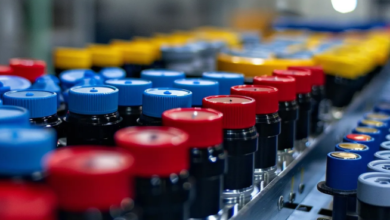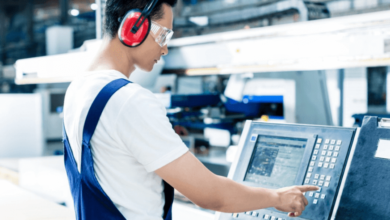Why Proper Equipment Installation is Crucial for Manufacturing

Efficient manufacturing relies on both quality equipment and proper installation. While not the most glamorous step, equipment installation is critical for seamless operations. Even the most advanced or costly machines can become liabilities if poorly installed.
Risks of Improper Installation
Cutting corners or neglecting best practices during the installation phase can lead to serious consequences for manufacturing facilities. Below are the key risks:
1. Safety Hazards
Improperly installed equipment can pose a significant safety threat to workers. Misaligned machinery, loose bolts, and malfunctioning components can cause accidents such as falls, crush injuries, or electrical shocks. For instance, failing to appropriately ground a machine’s electrical system can increase the risk of catastrophic electrical hazards.
When safety becomes compromised, companies may face operational shutdowns, lawsuits, and a loss of reputation. This highlights why following strict safety protocols during installation is non-negotiable.
2. Downtime and Lost Productivity
Incorrect equipment installation can result in frequent breakdowns and malfunctions, leading to costly downtime. Imagine a manufacturing line halting production because a poorly secured conveyor belt stops working. These interruptions not only disrupt workflows but also cause delays in fulfilling client orders, negatively impacting your bottom line.
3. Increased Maintenance and Repair Costs
When machines are improperly installed, they are more likely to experience wear and tear. Over time, this leads to frequent repairs and maintenance needs that could have been avoided with a proper setup. The costs of repairing these issues can quickly add up, robbing funds that could have been allocated elsewhere.
See also: The Future of Financial Technology (FinTech)
Benefits of Professional Installation
Investing in professional installation services pays off in numerous ways. Here’s why hiring experts makes all the difference:
1. Technical Expertise
Professional installers are trained to handle complex machinery and understand the unique requirements of each piece of equipment. They bring years of experience and a proven track record, ensuring that every component functions optimally from day one. Whether it’s aligning parts, securing bolts, or calibrating machinery, attention to detail is the hallmark of professional expertise.
2. Access to Proper Tools
Specialized installation often requires specific tools that may not be readily available to in-house teams. Professionals come equipped with advanced tools designed to handle intricate machinery setups, ensuring error-free execution.
3. Adherence to Safety Standards
Certified experts follow established industry safety standards during equipment installation. This reduces risk while ensuring that the machinery complies with local safety regulations. For example, an industrial electrician will meticulously check the grounding, wiring, and electrical components to avoid potential hazards.
4. Longevity and Reliability
When installation is done right the first time, machines operate as intended. This improves both their lifespan and reliability, maximizing your return on investment.
Checklist for Installation
Proper planning and execution are at the core of successful equipment installation. Here’s a checklist to follow:
1. Pre-Installation Planning
- Evaluate the Space: Ensure the area is suitable for the equipment’s size, ventilation, and operational requirements.
- Gather Resources: Include tools, parts, and manuals necessary for installation.
- Train the Team: Educate your staff on the installation workflow and post-installation operation.
2. Follow Manufacturer Guidelines
- Carefully read the instruction manual provided by the manufacturer.
- Adhere to all recommended steps and perform any necessary pre-installation inspections.
3. Hire Qualified Professionals
- If the equipment setup involves electrical work or precision alignment, hire an industrial electrician, like those in Michigan. They’ll ensure compliance with safety standards.
4. Test the Machinery
- Conduct thorough tests to verify the functionality of the equipment before full-scale operation.
- Ensure the machine runs efficiently under different loads or operational settings.
5. Document the Process
- Maintain a detailed installation record for future reference, which can be useful during maintenance or in the event of an audit.
Conclusion
Proper equipment installation isn’t just a step in the process; it’s the foundation upon which seamless operations are built. By minimizing risks, boosting reliability, and reducing costs, professional installation sets the stage for manufacturing success. Whether you’re setting up a single machine or an entire production line, attention to detail and professional expertise are non-negotiable.





